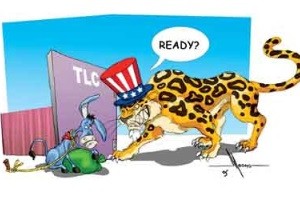By Danilo Valladares
GUATEMALA CITY, Jun 4, 2012 (IPS) – The poverty-stricken countries of Central America will face major challenges when the Association Agreement to be signed in late June with the European Union, including commitments on trade, political dialogue and cooperation, comes into effect.
“The region could benefit if all of its products, especially fruit and vegetables, other crops and some manufactured goods, are given privileged access” to the European market, Jonathan Menkos, an expert with the Central American Institute for Fiscal Studies (ICEFI), told IPS.
Menkos said this is the conclusion reached by impact studies carried out by the Economic Commission for Latin America and the Caribbean (ECLAC).
Under the European Union-Central America Association Agreement (EU-CAAA), both sides will open their markets to industrial products from the other. This will primarily benefit the EU, which will be able to sell its vehicles and machinery in this region, and invest in services like finances, communications and transport, experts said.
Central America, on the other hand, will be able to take advantage of quotas for the sale of beef, rice, sugar and textiles to the EU, a market of 500 million people, and of other concessions for the sale of coffee, bananas and rum.
In Menkos’ view, “the success of the agreement depends on generating public goods in the rural areas of our region that are today almost non-existent, such as education, health, roads, highways and other infrastructure for trade.”
Half of Central America’s 43 million people live in poverty, which is concentrated in rural areas. Because of this, Menkos suggested, the region should also aim at other markets, such as South Africa, Russia, China or India.
The EU and the governments of Costa Rica, El Salvador, Guatemala, Honduras, Nicaragua and Panama signed the basic agreement in May 2010, after three years of negotiations. Now, following lengthy technical adjustments, the final accord will be signed this month.
Javier Sandomingo, head of the European Commission delegation to Central America and Panama, announced that the definitive agreement would be signed Jun. 28-29 in Tegucigalpa, when Honduras hands over the rotating presidency of the Central American Integration System (SICA) to Nicaragua.
After the signing ceremony, the European Parliament and the legislatures of the Central American countries must ratify the agreement for it to enter into force.
Francisco Robles Rivera of the University of Costa Rica told IPS that the EU’s aim is merely “to consolidate the legal framework for its investments in the region.
“This is important in the present context, when Spanish companies, especially in the energy sector, are being nationalised in the public interest in Bolivia and Argentina,” he said.
“The EU wants new legislation on investments to safeguard, expand and facilitate the operations of European capital in the region, especially in the fields of mining, and insurance, telecommunications, tourism and other services,” he said.
Virgilio Álvarez, of the Latin American Faculty of Social Sciences (FLACSO), told IPS that “unfortunately, all bilateral and multilateral trade agreements ultimately are of greatest benefit to the wealthiest partners, and are therefore asymmetric.”
Nevertheless, Álvarez said it was “important and necessary” to sign an association agreement with the EU. “It will allow us to move forward with Central American integration, and unlike the free trade agreement with the United States (DR-CAFTA), non-trade elements are included,” he said.
The EU-CAAA includes cooperation goals for the region, such as improvement of the situation of indigenous people, justice, security, protection of the environment, fighting climate change, and transport.
It also encompasses an agenda for political dialogue, seeking to promote a series of common values between the parties, such as respect for democratic principles and basic rights.
“We could expect Europe to bring the wealth of its experience to the Central American integration process, but this will depend greatly on our capacity to absorb that experience,” said Álvarez.
Other organisations, in contrast, view the Association Agreement with the EU as a serious threat to Central America.
“Europe gave higher priority to its trading interests than to its traditional economic cooperation for the consolidation of democracy, governance and development in Central America,” says the Mesoamerican Initiative on Trade, Integration and Sustainable Development (CID), a civil society organisation.
“Central America obtained meagre access quotas for agricultural products such as sugar, textiles, beef and rice,” whereas the EU “gained full opening of Central American markets for a wide range of key agricultural and industrial goods, such as dairy products, vehicles, medicines and machinery,” it says in a communiqué.
Moreover, on intellectual property, CID questions the major concessions granted to the EU in terms of protected geographical designations, patents and copyright: in the area of services, the bloc was granted complete access in the fields of finance, transport and energy, among others.
Meanwhile, “Central America has yielded ground in terms of workers’ rights and environmental protection compared with other treaties,” since “the agreement with the EU does not provide for penalties for those who infringe these rights for the sake of commercial interests,” says CID.
The EU is one of Central America’s main trading partners, but the EU is by far the stronger partner, with a trade surplus in 2010 of 5.2 billion euros (6.4 billion dollars) and sales to Central America worth 25.9 billion euros (32 billion dollars), according to the European Commission.
Marco Antonio Barahona of the Central American Institute for Political Studies (INCEP) told IPS that Central America still has a lot of work to do on integration in order to be able to face up to these trade challenges. “We have not even been able to create a customs union in our region,” he said.
Besides, “we mainly export products that Europe can do without, such as bananas, coffee and sugar, as opposed to oil, for example, which fuels the economy,” he told IPS. (END/2012)
